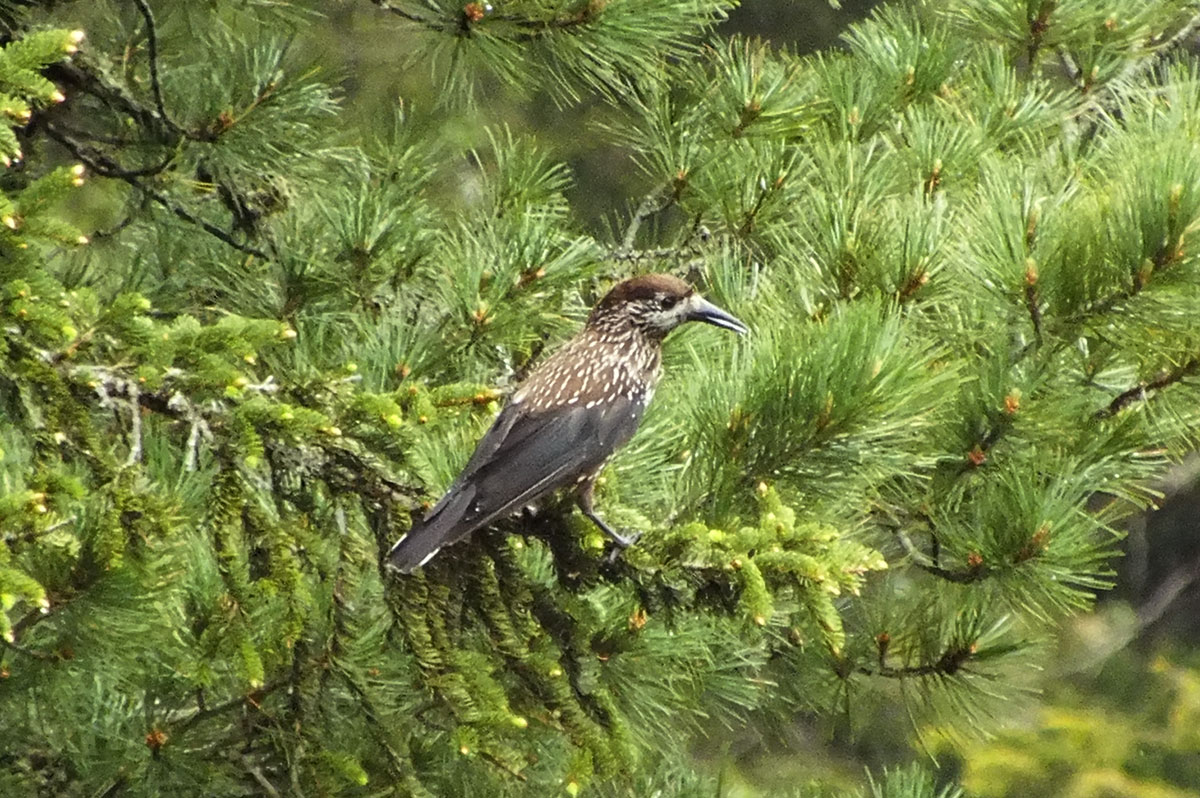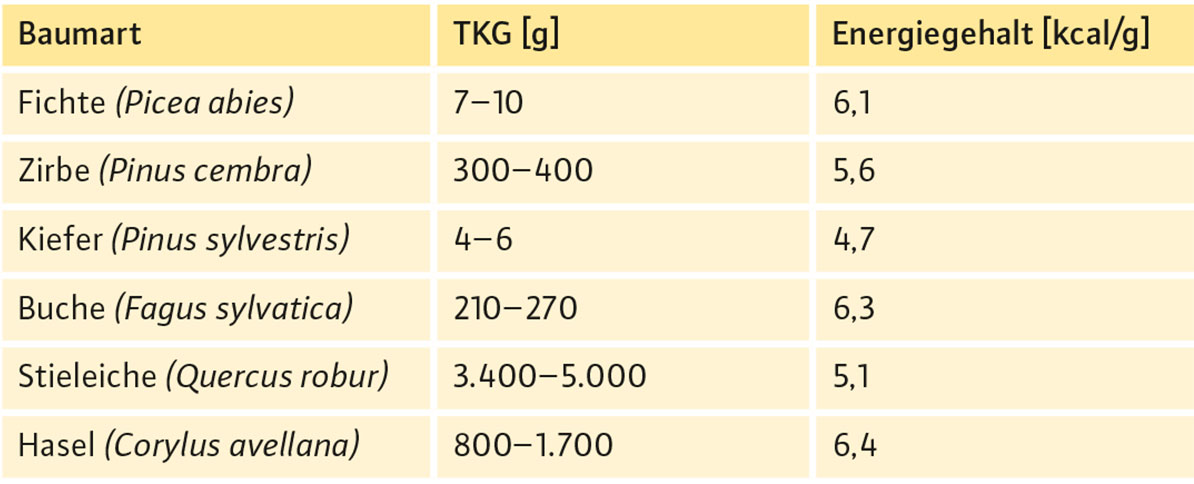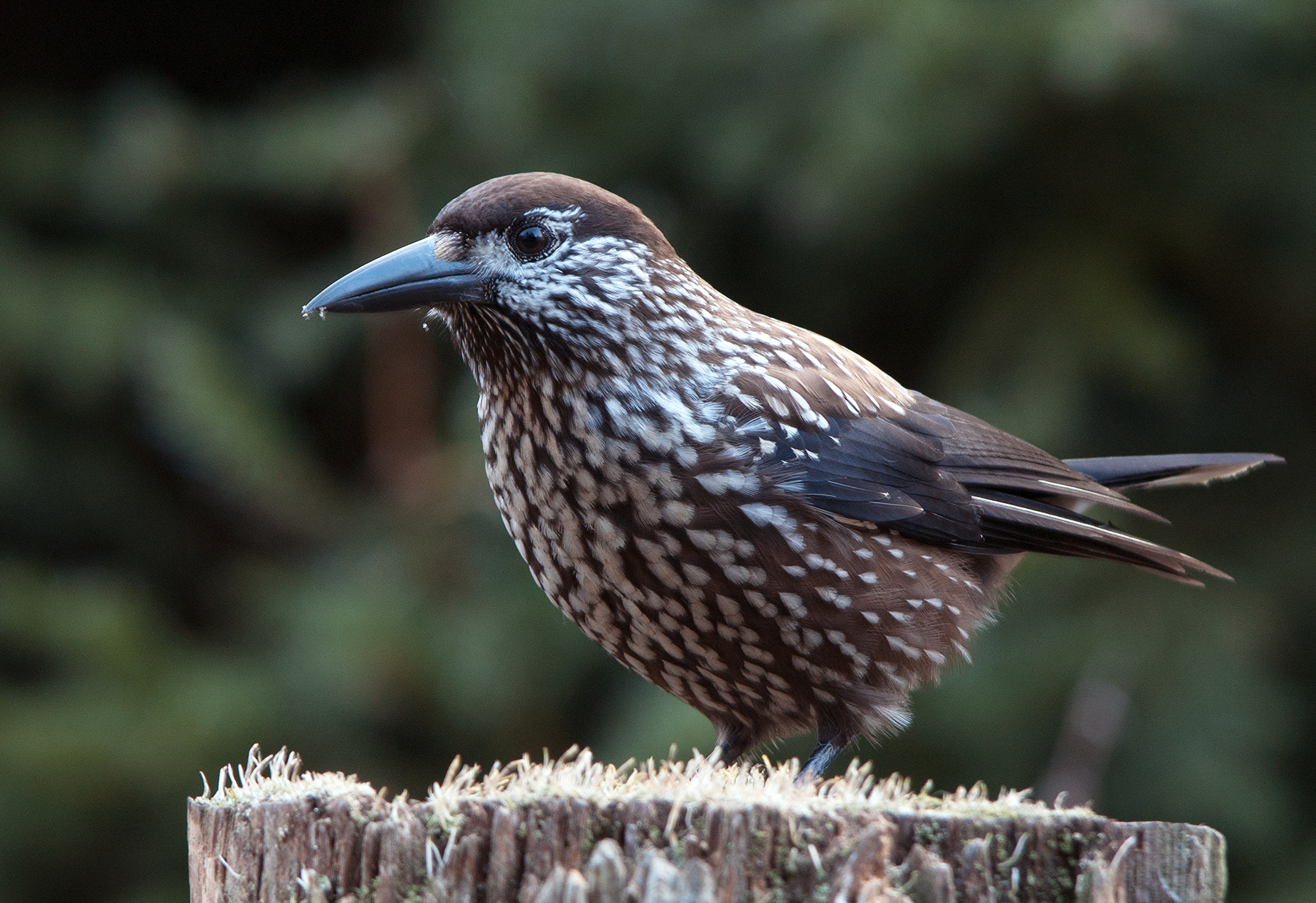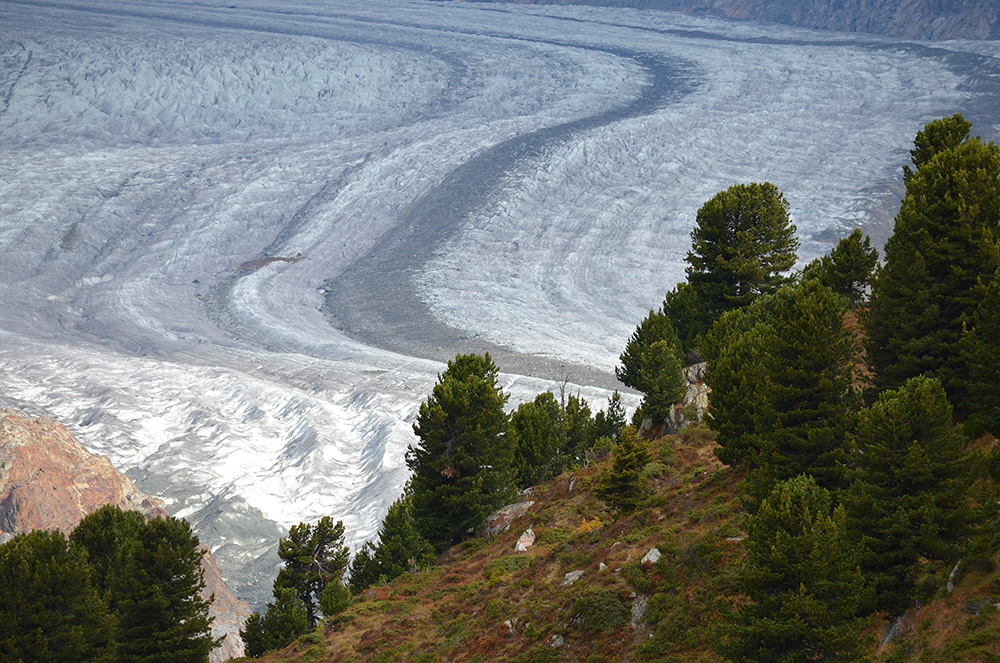In the meantime, many foresters and forest owners are now aware of the great "silvicultural role" played by our native Eurasian jay (Garrulus glandarius) in spreading the heavy seeds of certain of our tree species, especially the oak, but also walnut, sweet chestnut and beech. The fruitful, indeed symbiotic relationship between the spotted nutcracker (Nucrifraga caryocatactes) and the Swiss pine is even stronger, however.
Swiss pine - queen of the Alps
The Swiss pine, also known as the Stone pine or Arolla pine (Pinus cembra) has a small, fragmented range in the Alps, Carpathian and Transylvanian mountains. It mainly occurs at altitudes of between 1600 and 2400 m above sea level. In Bavaria the Swiss pine is to be found mainly in the Wetterstein mountains and Berchtesgadener Land region (Reiter Alm, Steinernes Meer). By contrast, its Siberian sub-species Pinus cembra var. Sibirica has a huge range, stretching east from the Urals to a long way east of Lake Baikal, i.e. from western to eastern Siberia. Because of its gnarled and often very striking shapes, and the high age it can reach in the Alpine region (up to 700 years), the Swiss pine is considered to be the "queen of the Alps". It is at least 40, sometimes 50 years or more before the Swiss pine bears its first cones, which only mature in the third year. Their upright, egg-shaped 7-8 cm long cones are initially purple, turning cinnamon brown later on. In contrast to the Scots pine (Pinus silvestris) and bog or mountain pine (Pinus mugo), the seeds ("pine nuts") of the Swiss pine have only a vestigial (non-functioning) wing and are relatively heavy. Whereas pine has a 1000 kernel weight (TKW) of 4 to 6 grammes, and spruce seeds a TKW of 7 to 10 grammes, Swiss pine seeds have a 1000 kernel weight of between 300 and 400 grammes (Fig. 2).
Unlike the winged seeds of Scots pine (Pinus silvestris), spruce (Picea abies) or larch (Larix decidua), the considerably heavier seeds of the Swiss pine are almost exclusively distributed by the nutcracker.
In terms of their energy content, the seeds of coniferous tree species are quite comparable with hazelnuts and acorns per unit of weight (Fig. 2). The large seeds of the Swiss pine are therefore of great interest to animal species such as squirrels, the red crossbill (Loxia curvirostra) and the spotted nutcracker. Indeed, pine nuts are even eaten by humans.
The spotted nutcracker and its European jay relatives
Two species of jay occur in central Europe: the Eurasian jay (Garrulus glandarius), and the less well known and more secretive spotted nutcracker (Nucifraga caryocatactes). At irregular intervals, Siberian jays (Perisoreus infaustus) sometimes also fly into central Europe during the winter months. The spotted nutcracker has a huge range, stretching from central Europe via Russia and Siberia, as far as East Asia in the Far East and the Kamchatka peninsula. In Bavaria it tends to inhabit mainly the coniferous forests of the mid-range and high mountains.
Spotted nutcracker and Swiss pine: a highly symbiotic relationship
The Swiss pine has an abundant seed or mast year only every 5 to 7 years. This is a particularly good time to observe the spotted nutcracker at its work, harvesting the ripe Swiss pine cones and taking them to a suitable “anvil”, e.g. fork in a tree, where it can clamp the cone for “processing”. Here it chisels away the scales of the pine cone with its powerful beak to pick out the little nuts and stow them away in its throat pouch. Foresters and forest owners used to think that this activity meant the spotted nutcracker had a damaging effect on the regeneration of the Swiss pine. It was even described as the “most dangerous enemy of the Swiss pine”, a “dreadful robber”, or an “impossible journeyman”. But as early as the 19th century, there were foresters who observed nature very closely and realised that the spotted nutcracker was in fact extremely important for the regeneration of the Swiss pine in the high mountains.
100 years later, studies carried out by Mattes (1982) clearly demonstrated the silvicultural importance of the spotted nutcracker for the regeneration of Swiss pine. Because of its heavy seeds, the Swiss pine is in fact dependent on the spotted nutcracker for its propagation, especially when it is a case of working against the force of gravity to spread uphill! One single spotted nutcracker was found to be able to hide an average of 47,000 seeds during a poor seed harvest, and some 109,000 Swiss pine seeds in 6,000 caches when the harvest was good. It was sometimes found to have transported the seed in its throat pouch over distances of 15 kilometres. Even under a thick covering of up to 50 cm of snow, spotted nutcrackers can find three quarters of their food stores again. Like many other birds of the Corvid family, the spotted nutcracker has an excellent spatial awareness. Recent studies have however shown that the spotted nutcracker usually hides the pine nuts in places that are not very suitable for the germination of the seeds. Thanks to its excellent memory, it is assumed that the spotted nutcracker finds 80 % of the pine seeds it hides again. Although the contribution of the spotted nutcracker to the regeneration of Swiss pine is thus less than has been assumed up to now, it nevertheless remains the only effective vector of dispersal for this tree species. The relatively low proportion of pine nuts distributed by the spotted nutcracker in favourable eco-habitats is obviously still sufficient to ensure the sustainable regeneration and spread of the Swiss pine.
Spotted nutcrackers and hazelnuts
Spotted nutcrackers not only occur in the high altitude areas of central Europe, however, but also in extensive areas outside the range of Swiss pine, especially in large contiguous areas of coniferous forest. So what does the spotted nutcracker eat in these areas? The most important food source for the spotted nutcracker in these areas is the hazelnut, which it also "squirrels away" in food caches. How closely the range of the spotted nutcracker is tied to the range of the hazel has been well described by Guest 2016 for the district of Kronach in the Frankenwald forest. In unusually good spruce mast years, the spotted nutcracker also feeds on spruce seeds, which are otherwise not such an attractive food source for it because of their size.
The spotted nutcracker and Swiss pine belong together
The seeds of Swiss pine are the single most important food source for the spotted nutcrackers of the Alpine region. These in turn are the most important means of seed dispersal for the Swiss pine. For foresters and friends of nature it is fascinating to watch as our two native jay species, the spotted nutcracker and the Eurasian jay, hide seeds in the earth - the only two bird species in Europe to do so - in order to dig them up again later and eat them. This is behaviour otherwise seen only in rodents.




